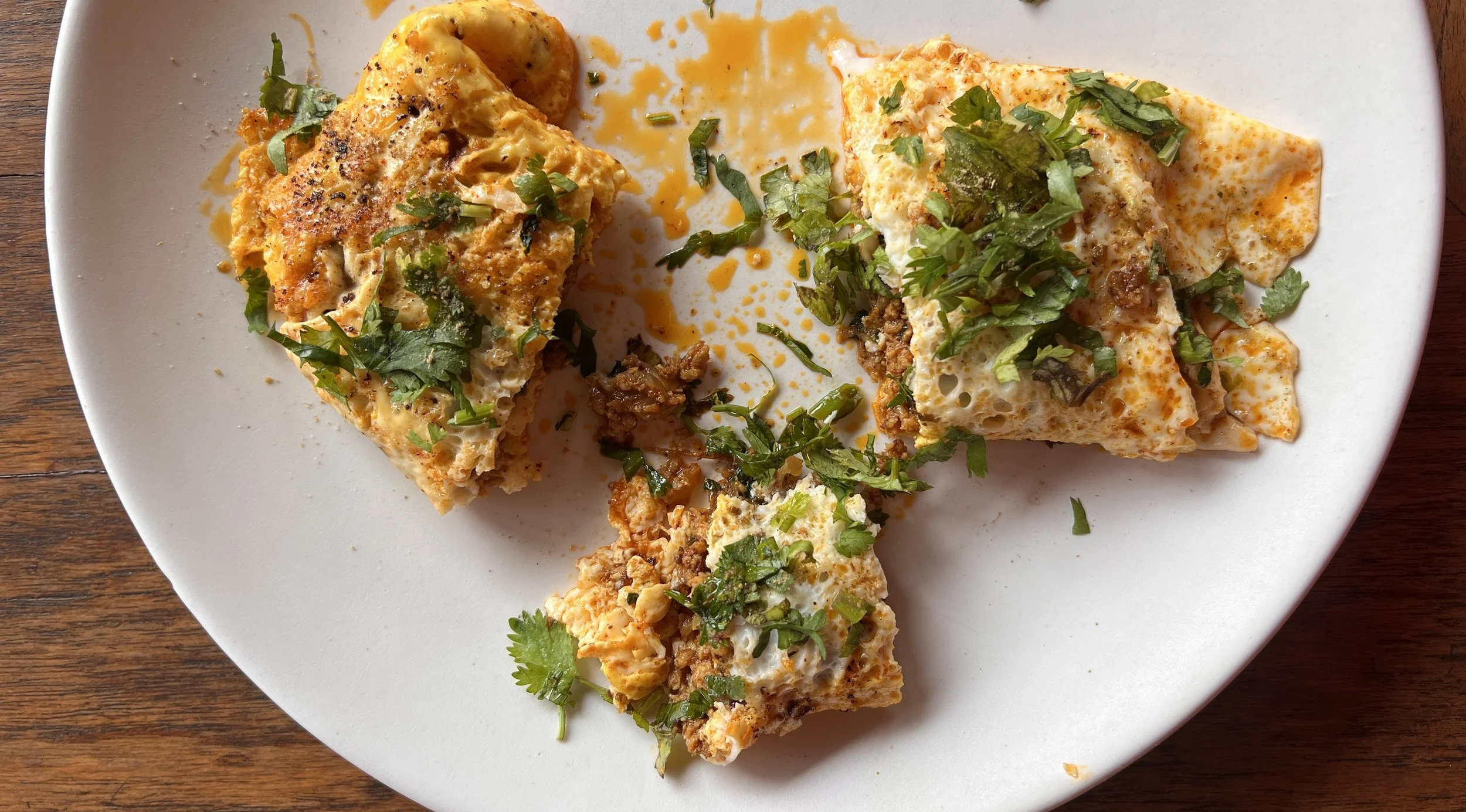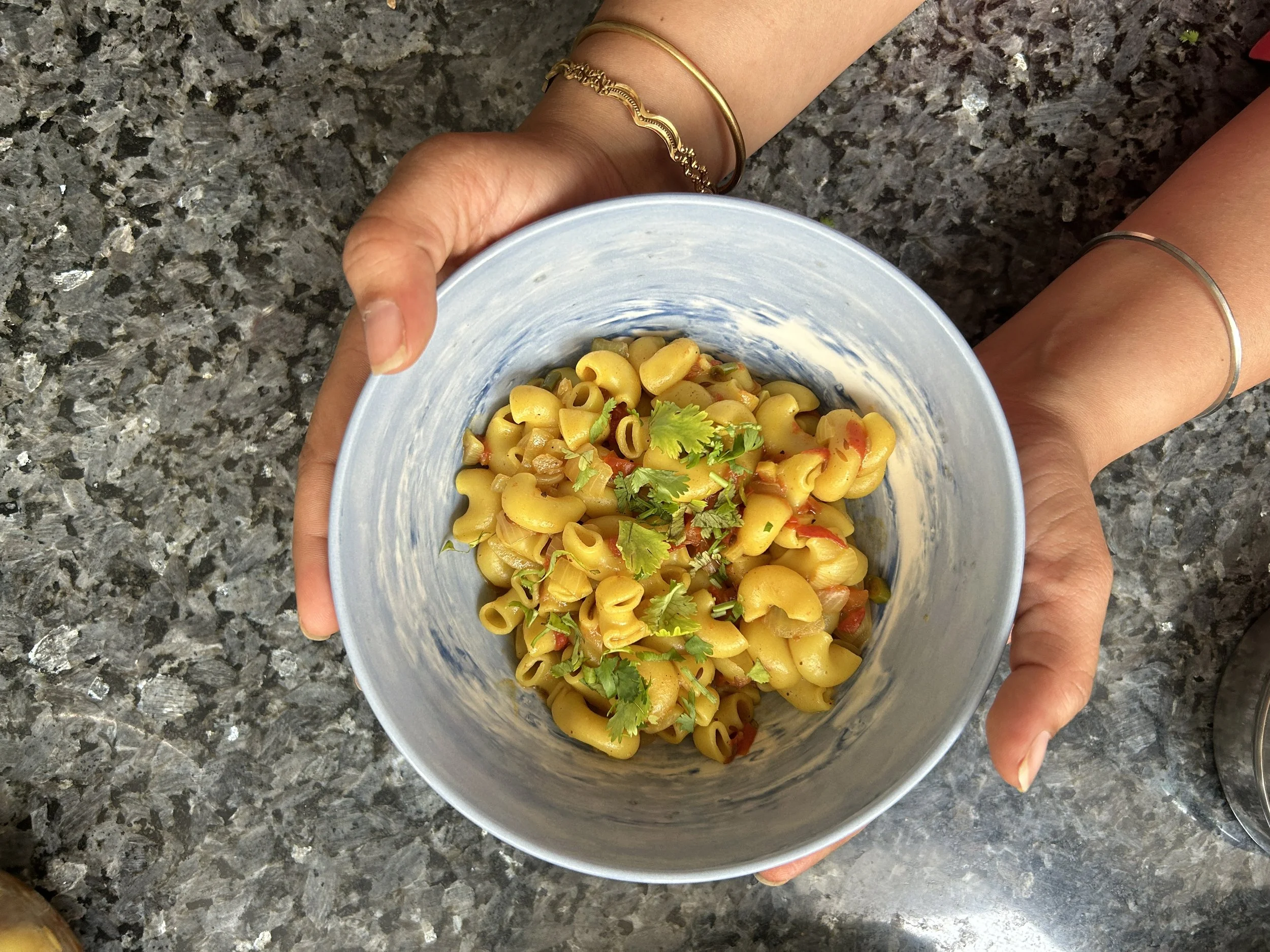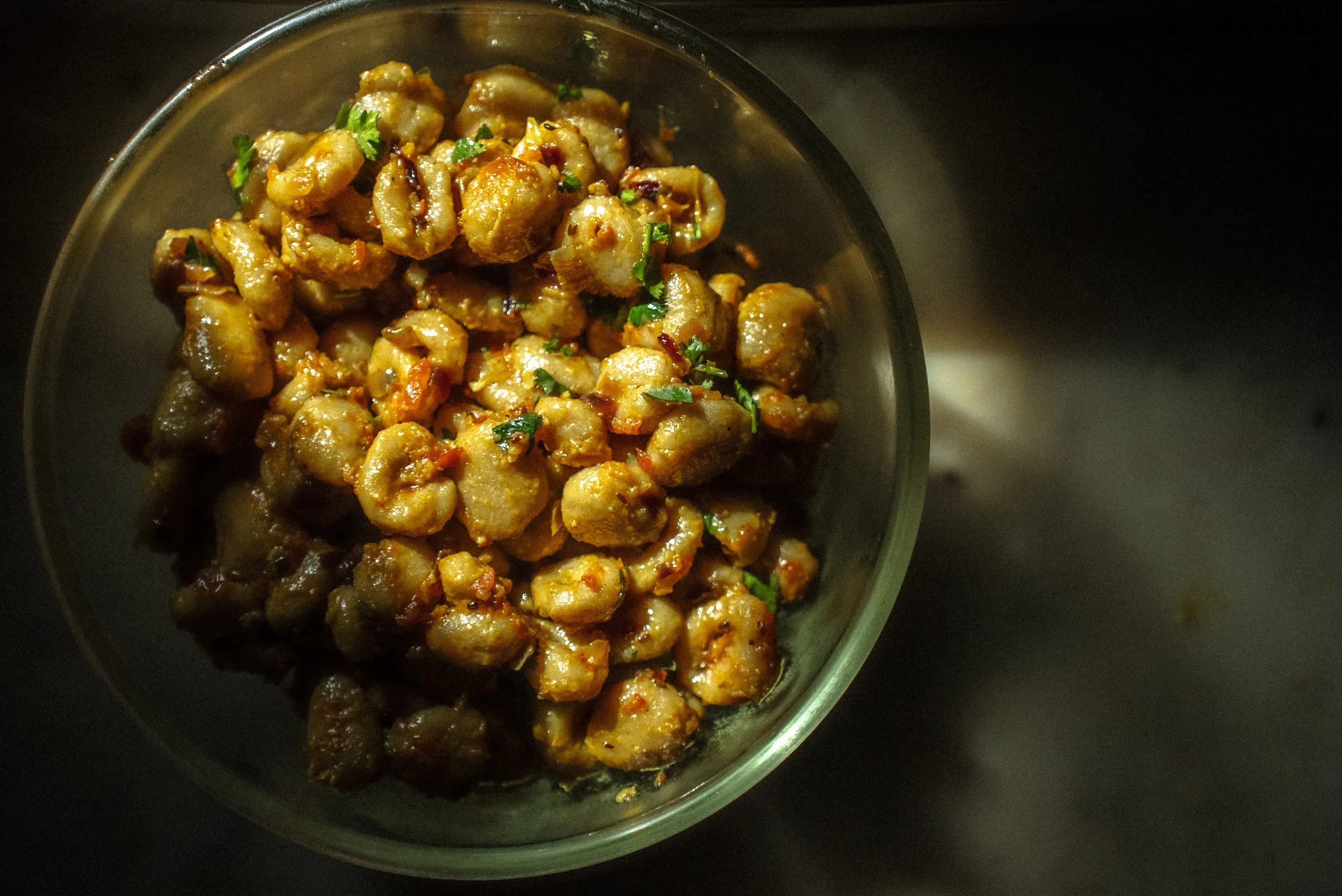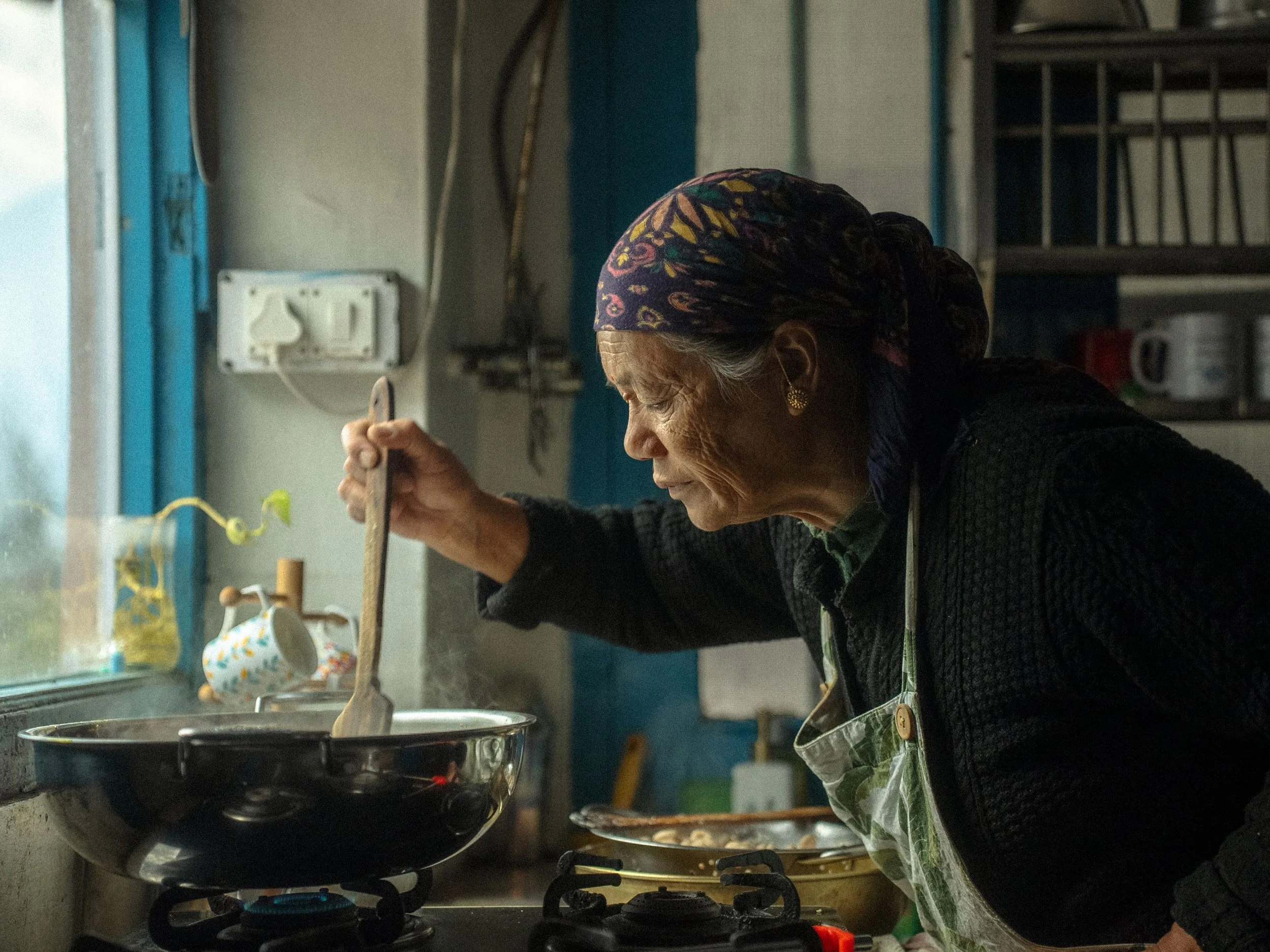#1000Kitchens Recipe Drop: Gus-Gusay Payasa

Anjali Ganapathy loads pandi onto thick slices of milk bread. It is early June in Bangalore, and her kitchen smells like slow-roasted spices. Two glasses of cold passionfruit juice gather beads, and we swipe every last bit of gravy off those floral plates.
“I started to feel guilty,” she says, moving between her Phillips mixer and two bowls of pre-soaked raw rice and jaggery on the counter. “Pig Out had given me so much: purpose, direction, happiness. I wanted to give back, but I couldn’t figure out how.”
For over a decade, Pig Out, Anjali’s culinary enterprise, has introduced Coorg cuisine to Bangalore through curated dining experiences, music festivals, Sunday markets and bar and restaurant pop-ups. She carried Kodava cuisine to far corners of the country, and abroad, always in conversation with the land and its culture.For years, pandi curry was her anchor — a beloved dish, unmistakable Kodava in its flavour and colour, marked by the region’s distinctive kachampuli. A dish she describes as “an easy gateway into the cuisine.”
Now, almost a decade later, Anjali feels the ground shifting. “Finally, the market’s ready for something beyond pandi,” she says. “Desserts, subtle flavours — other things from the Kodava kitchen.” She strains the muslin cloth, and coconut milk streams through. Gus-gusay payasa is made from rice, poppy seeds, coconut milk and jaggery. “Poppy seeds in Coorg cuisine is unusual. Maybe it came in through wealthier households that travelled? This dish in itself is stunning; mellow, nutty, soothing. But in the right hands, it can transform into so many things – we’ve made gelato, panna cotta, even kheer.”
Gus-gusay payasa is a dessert she’d loved as a child but hadn’t found in years. “People got busy and they’ve stopped making it. It is time-consuming, and tedious,” she concedes. “You soak rice and poppy seeds overnight, blitz them together, then strain the milk through muslin three times or four times.” The payasa has disappeared from most household kitchens, but it is still served at wedding feasts, where caterers tend to skip the straining. “You’ll taste the rice grain and poppy seeds in your mouth – which is fine, but I prefer it the old way – I remember it thick and creamy, like a mousse.”
This is a #1000Kitchens feature. More, here.
RECIPE FOR GUS-GUSAY PAYASA
Note: Serves up to 8 dessert bowls. At the end of the cook, the quantity of payasa will have doubled, so adjust accordingly.
Ingredients
½ cup rice
1 cup poppy seeds
2 XX ghee
1 cup milk
1 cup coconut milk
½ tsp cardamom powder
Sugar or jaggery, to taste
7-8 ghee fried raisins & cashew
3 tbsp ghee
Method
Soak rice and poppy seeds together in a 1:2 ratio. Any white rice will do. This recipe uses jeerige sanna (jeera samba).
Wash and soak rice and poppy for a minimum of two hours. I prefer to leave it overnight; this ensures the rice has softened nicely, and it counters the more stubborn variety of rice. If the weather is very humid where you are, leave it in the fridge, to avoid potential souring.
Add water, grind to fine paste and extract the milk, by straining through a muslin cloth. Set the extract aside and repeat process twice more, adding water to the leftover grains, then grinding and straining.
In a pan, heat ghee, add the extracted rice-poppy milk and keep stirring with a whisk or spoon till ghee is fully emulsified. Gradually add the milk and coconut milk, and a pinch of cardamom, and jaggery or sugar to sweeten it.
Keep stirring to avoid lumps. Turn off the gas once it thickens and is viscous (it should leave a thick coating on a spoon).
Garnish with ghee-fried raisins and cashew.
This can be consumed cold too.
Words by Anisha Oommen. Photographs by Terrence Manne.
Special thanks to our partners.
ALSO ON GOYA











